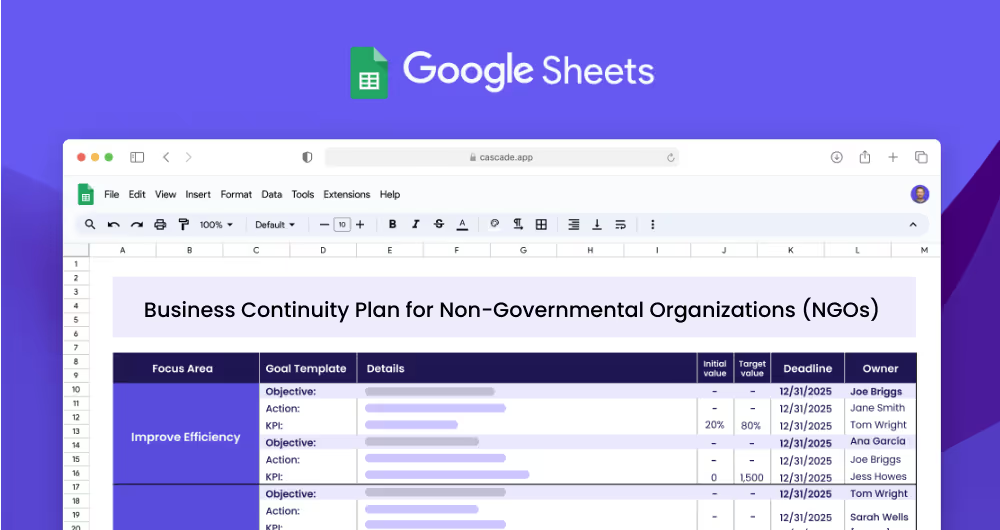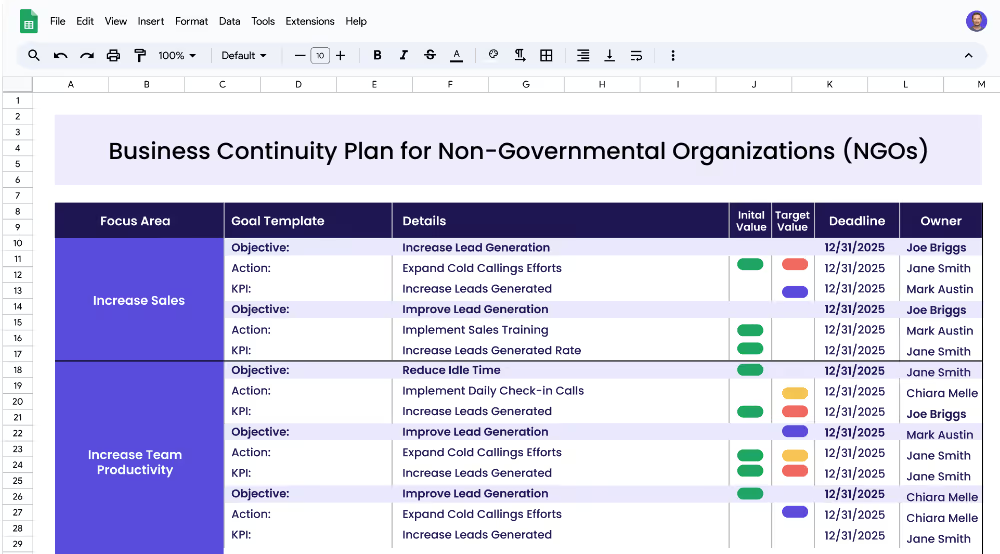A Business Continuity Plan (BCP) is a plan outlining the steps an organization takes to continue providing essential services, advocacy work and programs during crisis situations or unexpected events. This plan outlines the processes and procedures needed to ensure the organization's operations can continue while minimizing the disruption caused by the event. The BCP is an essential tool for NGOs and nonprofit entities in order to remain resilient and maintain their operations in times of crisis.
Each focus area has its own objectives, projects, and KPIs to ensure that the strategy is comprehensive and effective.
This Business Continuity Plan for Non-Governmental Organizations (NGOs) Template is designed for NGOs and nonprofit entities to create their own BCP for the purpose of strengthening their organizational resilience. The template provides a comprehensive framework to help NGOs develop their own plan tailored to their specific needs, addressing areas such as Risk Management, Business Continuity, Financial Resilience and Human Resources Resilience.
The focus areas are the broad topics that the BCP will address. For this template, there are three focus areas: Strengthen Organizational Resilience, Strengthen Financial Resilience and Strengthen Human Resources Resilience. Each focus area contains objectives, which are specific goals that need to be achieved, and actions, which are projects that need to be implemented to achieve the objectives.
Objectives are specific goals that need to be achieved within the focus area. Each objective contains measures, or Key Performance Indicators (KPIs), which are quantitative targets that need to be met in order to achieve the objective. Examples of some objectives for the focus area of Strengthen Organizational Resilience could be: Establish a Risk Management Strategy, and Establish a Business Continuity Plan.
A Key Performance Indicator (KPI) is a numerical measure that is used to evaluate the success of a project, program, or action. It helps to track progress toward the set objective. Each KPI has an initial value and a target value, which are used to measure the progress of the project. An example of a KPI for the focus area of Strengthen Organizational Resilience could be: Identify potential risks.
Actions are projects that need to be implemented in order to achieve the KPI targets. These actions can range from developing a risk assessment framework to creating a fundraising strategy. An example of a project related to Strengthen Organizational Resilience could be: Develop a risk assessment framework.
Position your organization for swifter, more effective strategic execution with Cascade Strategy Execution Software. Cascade transcends traditional manual tools like spreadsheets, enabling a more dynamic approach to managing your business continuity plans. Our platform facilitates real-time updates, centralized management, and automated reporting, allowing you to focus on what truly matters—maintaining critical operations during crises. Sign-up for free or book a demo with one of our strategy experts to accelerate your efforts efficiently.


